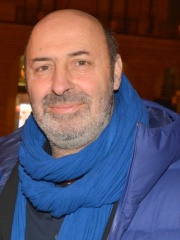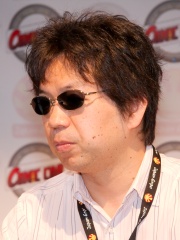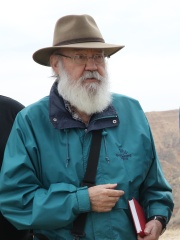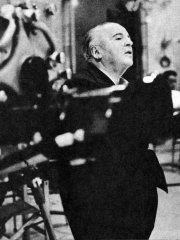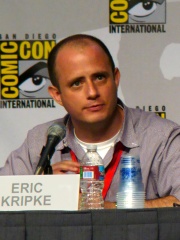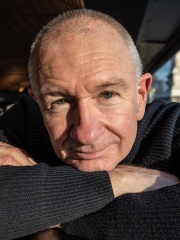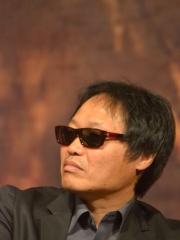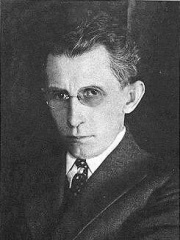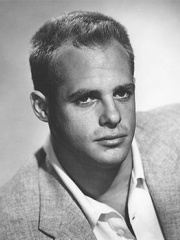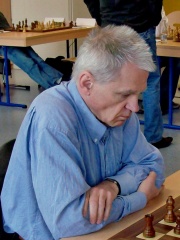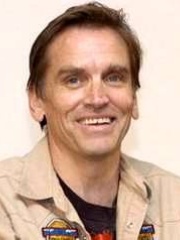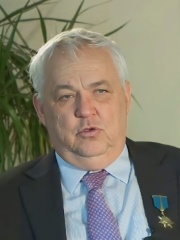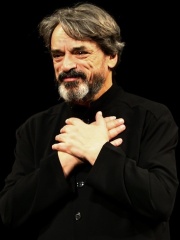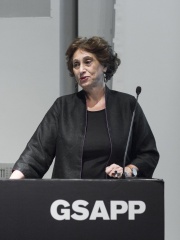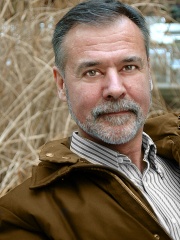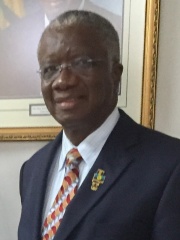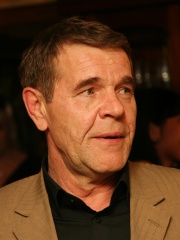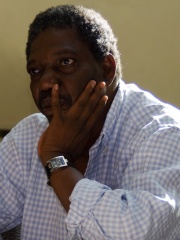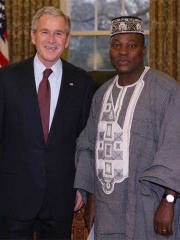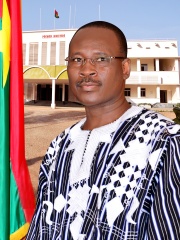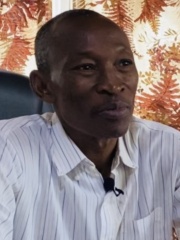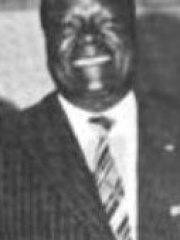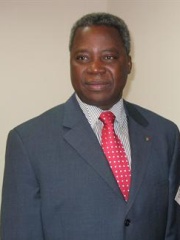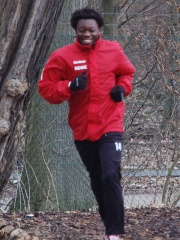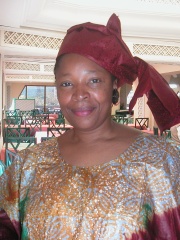FILM DIRECTOR
Gaston Kaboré
1951 - Today
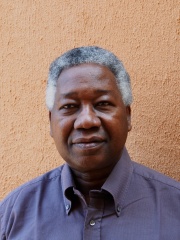
 Gaston Kaboré
Gaston Kaboré
Gaston Kaboré (born 1951) is a Burkinabé film director and an important figure in Burkina Faso's film industry. He has won awards for his films Wend Kuuni and Buud Yam. Read more on Wikipedia
Since 2007, the English Wikipedia page of Gaston Kaboré has received more than 27,140 page views. His biography is available in 18 different languages on Wikipedia (up from 15 in 2019). Gaston Kaboré is the 1,249th most popular film director (up from 1,334th in 2019), the 17th most popular biography from Burkina Faso (down from 14th in 2019) and the 2nd most popular Burkinabe Film Director.
Memorability Metrics
27k
Page Views (PV)
45.85
Historical Popularity Index (HPI)
18
Languages Editions (L)
6.76
Effective Languages (L*)
1.65
Coefficient of Variation (CV)
Page views of Gaston Kaboré by language
Over the past year Gaston Kaboré has had the most page views in the French wikipedia edition with 4,595 views, followed by English (3,309), and German (1,063). In terms of yearly growth of page views the top 3 wikpedia editions are Haitian (158.29%), Igbo (98.81%), and French (88.71%)
Among FILM DIRECTORS
Among film directors, Gaston Kaboré ranks 1,249 out of 2,041. Before him are Cédric Klapisch, Shinichirō Watanabe, José Luis Cuerda, Mario Mattoli, Eric Kripke, and Paweł Edelman. After him are Kwak Jae-yong, Jacques Rouffio, J. Searle Dawley, Corey Allen, Kurt Hoffmann, and Simon West.
Most Popular Film Directors in Wikipedia
Go to all RankingsCédric Klapisch
1961 - Present
HPI: 45.93
Rank: 1,243
Shinichirō Watanabe
1965 - Present
HPI: 45.91
Rank: 1,244
José Luis Cuerda
1947 - 2020
HPI: 45.91
Rank: 1,245
Mario Mattoli
1898 - 1980
HPI: 45.91
Rank: 1,246
Eric Kripke
1974 - Present
HPI: 45.90
Rank: 1,247
Paweł Edelman
1958 - Present
HPI: 45.85
Rank: 1,248
Gaston Kaboré
1951 - Present
HPI: 45.85
Rank: 1,249
Kwak Jae-yong
1959 - Present
HPI: 45.84
Rank: 1,250
Jacques Rouffio
1928 - 2016
HPI: 45.82
Rank: 1,251
J. Searle Dawley
1877 - 1949
HPI: 45.81
Rank: 1,252
Corey Allen
1934 - 2010
HPI: 45.80
Rank: 1,253
Kurt Hoffmann
1910 - 2001
HPI: 45.79
Rank: 1,254
Simon West
1961 - Present
HPI: 45.76
Rank: 1,255
Contemporaries
Among people born in 1951, Gaston Kaboré ranks 435. Before him are Zoltán Ribli, Bill Moseley, Sergey Tereshchenko, Hans Schlegel, Fiorella Bonicelli, and Hossein Alizadeh. After him are Timothy Bottoms, Suad Amiry, Albert Salvadó, Aaron Norris, Freundel Stuart, and Aleksey Buldakov.
Others Born in 1951
Go to all RankingsZoltán Ribli
CHESS PLAYER
1951 - Present
HPI: 46.06
Rank: 429
Bill Moseley
ACTOR
1951 - Present
HPI: 46.03
Rank: 430
Sergey Tereshchenko
POLITICIAN
1951 - 2023
HPI: 46.00
Rank: 431
Hans Schlegel
ASTRONAUT
1951 - Present
HPI: 45.98
Rank: 432
Fiorella Bonicelli
TENNIS PLAYER
1951 - Present
HPI: 45.97
Rank: 433
Hossein Alizadeh
MUSICIAN
1951 - Present
HPI: 45.87
Rank: 434
Gaston Kaboré
FILM DIRECTOR
1951 - Present
HPI: 45.85
Rank: 435
Timothy Bottoms
ACTOR
1951 - Present
HPI: 45.83
Rank: 436
Suad Amiry
ARCHITECT
1951 - Present
HPI: 45.83
Rank: 437
Albert Salvadó
WRITER
1951 - 2020
HPI: 45.77
Rank: 438
Aaron Norris
FILM DIRECTOR
1951 - Present
HPI: 45.75
Rank: 439
Freundel Stuart
POLITICIAN
1951 - Present
HPI: 45.73
Rank: 440
Aleksey Buldakov
ACTOR
1951 - 2019
HPI: 45.70
Rank: 441
In Burkina Faso
Among people born in Burkina Faso, Gaston Kaboré ranks 17 out of 49. Before him are Idrissa Ouédraogo (1954), Paramanga Ernest Yonli (1956), Paul-Henri Sandaogo Damiba (1981), Yacouba Isaac Zida (1965), Ibrahim Traoré (1988), and Apollinaire J. Kyélem de Tambèla (1958). After him are Gilbert Diendéré (1960), Gérard Kango Ouédraogo (1925), Luc-Adolphe Tiao (1954), Tertius Zongo (1957), Jacky Ido (1977), and Wilfried Sanou (1984).
Others born in Burkina Faso
Go to all RankingsIdrissa Ouédraogo
FILM DIRECTOR
1954 - 2018
HPI: 48.95
Rank: 11
Paramanga Ernest Yonli
POLITICIAN
1956 - Present
HPI: 48.72
Rank: 12
Paul-Henri Sandaogo Damiba
MILITARY PERSONNEL
1981 - Present
HPI: 48.56
Rank: 13
Yacouba Isaac Zida
POLITICIAN
1965 - Present
HPI: 47.93
Rank: 14
Ibrahim Traoré
MILITARY PERSONNEL
1988 - Present
HPI: 46.42
Rank: 15
Apollinaire J. Kyélem de Tambèla
POLITICIAN
1958 - Present
HPI: 45.93
Rank: 16
Gaston Kaboré
FILM DIRECTOR
1951 - Present
HPI: 45.85
Rank: 17
Gilbert Diendéré
POLITICIAN
1960 - Present
HPI: 45.37
Rank: 18
Gérard Kango Ouédraogo
POLITICIAN
1925 - 2014
HPI: 44.56
Rank: 19
Luc-Adolphe Tiao
POLITICIAN
1954 - Present
HPI: 43.95
Rank: 20
Tertius Zongo
POLITICIAN
1957 - Present
HPI: 41.85
Rank: 21
Jacky Ido
ACTOR
1977 - Present
HPI: 41.12
Rank: 22
Wilfried Sanou
SOCCER PLAYER
1984 - Present
HPI: 40.39
Rank: 23
Among FILM DIRECTORS In Burkina Faso
Among film directors born in Burkina Faso, Gaston Kaboré ranks 2. Before him are Idrissa Ouédraogo (1954). After him are Fanta Régina Nacro (1962).
Idrissa Ouédraogo
1954 - 2018
HPI: 48.95
Rank: 1
Gaston Kaboré
1951 - Present
HPI: 45.85
Rank: 2
Fanta Régina Nacro
1962 - Present
HPI: 33.84
Rank: 3
